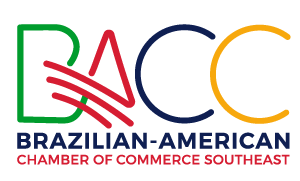
Characteristics of a Good Business Plan
May 27, 2020
Alert: COVID-19 Tele-commuting and Cybercrime
May 27, 2020The crisis that emerged as a result of the strong impact of COVID-19 on politics, the economy and society, along with commercial conflicts, political friction, diminished resources and social unrest, made changes in economic conditions inevitable.
CEOs of large companies expected a slowdown, even before COVID-19. During the World Economic Forum in Davos, PwC published the results of the 23rd edition of the Global CEO Survey, in which it interviewed 1,581 heads of companies from 83 countries. According to the report, 53% of CEOs surveyed are convinced that the pace of economic growth will be slower in the next year than in the past 12 months. Interestingly, the corresponding indicator was 29% in 2019 and, just two years earlier, in 2018, the survey showed record optimism, as only 5% of respondents expected a slowdown!
In turbulent times, effective leaders are distinguished by their ability to make the right decisions based on their knowledge, intuition and experience. However, when new sources of uncertainty appear, the “right” decisions are becoming perceived as safer and less about moving the company forward. Herbert A. Simon, the father of Behavioral Economics, had written about this, when he stated that people have limited capacity to see clearly, and, in their conduct, can only be guided by "limited rationality". According to his theory, a company that operates in an uncertain and complex environment has a limited capacity to perceive reality and, therefore, business decisions aim only at satisfactory and not optimal solutions.
And when it is difficult to make great decisions, most companies suffer painfully from the economic downturn. Unfortunately, there are not many reliable studies on strategies that would help companies survive a recession, take best advantage during a slow recovery and prepare to win when the good times return. That is why research conducted on this topic by three economists is extremely important: Nitin Nohria (Dean of Harvard Business School), Ranjay Gulati (Harvard Business School) and Franz Wohlgezogen (University of Melbourne). The scientists spent a year analyzing policy choices and business outcomes during the last three global economic downturns: the 1980 crisis, the 1990 slowdown and the 2000 crash. They examined 4,700 public companies, dividing their data into three periods: three years before the recession, three years after the recession and the recession itself. The results of the research, published in the article Roaring Out of Recession (Harvard Business Review 88, no. 3), proved to be unambiguous, but also intriguing. About 17% of the companies surveyed did not survive the recession - they went bankrupt, were taken over or passed on to private investors. Those who survived took a long time to recover from the effects of the recession. Three years following the recession, about 80% of them had not yet regained pre-recession annual sales levels.
However, the study showed that there was a small percentage, 9%, of companies that flourished after the slowdown, reaching better financial ratios than before the recession and surpassing industry rivals by at least 10% in terms of sales and profit growth. So, what led them to turn the threat into success? It was found that good results after the recession are achieved by companies capable of maintaining a delicate balance between cost reduction and investments. Successful companies have focused more on operational efficiency than rivals, and at the same time have invested heavily in the future, incurring expenses with marketing, research and development and new assets. According to the study's authors, this strategy proved to be the best antidote to the recession.
The conclusions drawn by the scientists later found confirmation in research carried out by the consulting companies Bain and McKinsey after the 2009 crisis. They attributed the success enjoyed by certain companies that were profitable both during the recessions and after to activities that can be grouped around four themes:
- They keep their loans and payables low so as not to overly spend on servicing their debt in times of recession;
- They maintain decentralized processes and listen carefully to employee opinions;
- They look for ways to save money without layoffs so as not to lose talented employees;
- They invest in new technological solutions.
On the other hand, companies that suffered painfully from the effects of the various financial crises generally did not have contingency plans or alternative strategies before the recessions. As a result, when the economy cooled, they focused on survival, focusing on defensive actions through deep cost cuts. The long-term effect of the defensive strategy was a slower recovery from the recession. Professor Rita Gunther McGrath of the at Columbia Business School, and Ian C. MacMillan Professor of Innovation and Entrepreneurship at the University of Pennsylvania’s Wharton School, based on research carried out after the 2001 and 2007 crisis, formulated reliable rules for business cycle management that are worth considering when making tactical and strategic decisions. They published these principles in the "MIT Sloan Management Review" in an article entitled How to rethink your business during uncertainty.
According to Rita Gunther McGrath and Ian C. MacMillan, developing organizational resistance to the recession requires three steps:
- Learn to predict economic changes;
- Preparation of operational and long-term plans in correlation with business cycles;
- Build a recession-proof organization through the efficient implementation of strategies and tactics adapted to the economic situation.
They cite several examples that show the importance of observing market data, having the ability to interpret it and preventive actions. He gives an example of the use of The Conference Board Index, along with observing changes in the interest rate curve and the major stock indexes, to provide an extremely strong signal of the impending recession in March 2001.
The most important thing, however, is implementation, that is, the third step. For success, it is crucial to execute specific strategic actions (including capital management and mergers and acquisitions) and tactics (including inventory management, marketing policy and prices) carried out at the right time in the business cycle.
Following this pattern, the DuPont Company used the 2001 recession as a call to action in order to accelerate the pace of its modernization programs, as part of broader efforts to change the product portfolio. In turn, Southwest Airlines used its internal forecast of global oil shortages to hedge against rising fuel costs and achieved a profit almost three times higher than the industry average.
“Every recession creates opportunities for innovative entrepreneurs. And hesitation does not mean security in uncertain times. Rather than simply waiting for things to get better, you must act to improve your operations and position yourself for growth when the economy recovers. It takes courage to invest in times of uncertainty, but if you do it wisely, you will see positive results along the way.” (dbc.ca)





